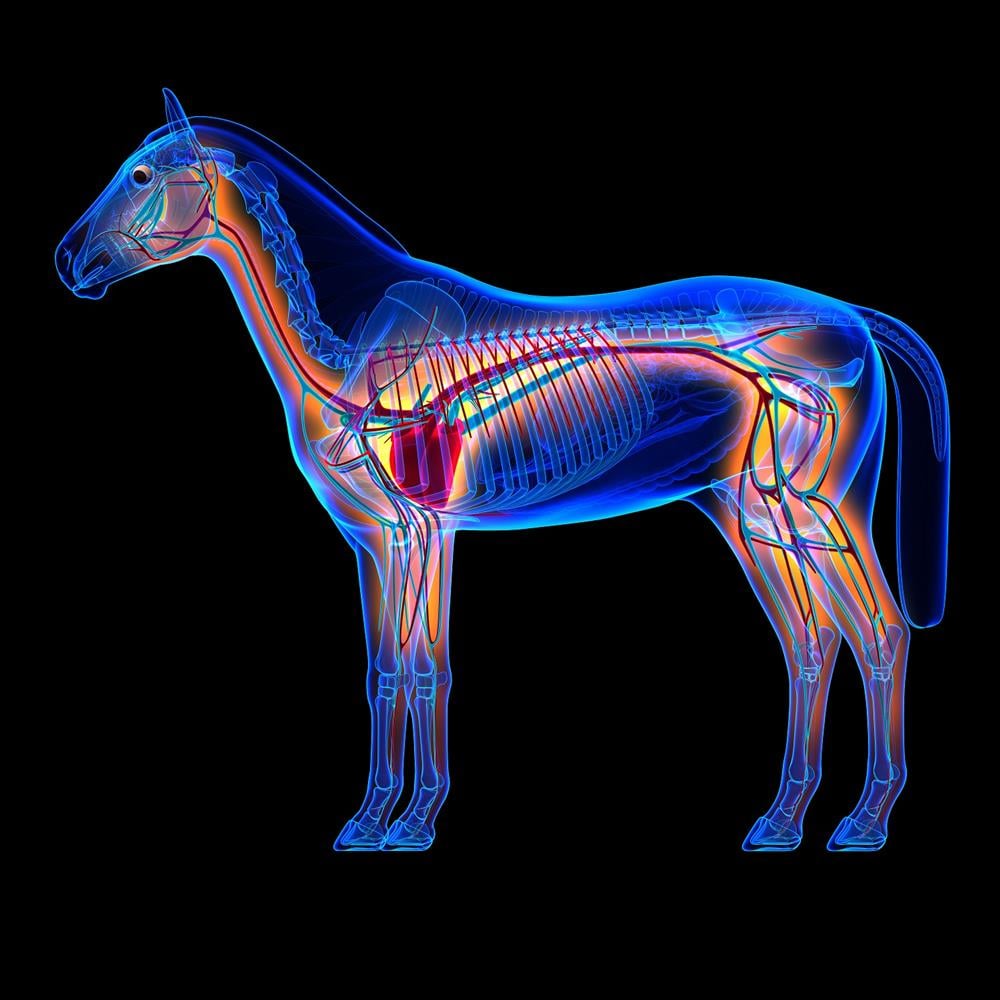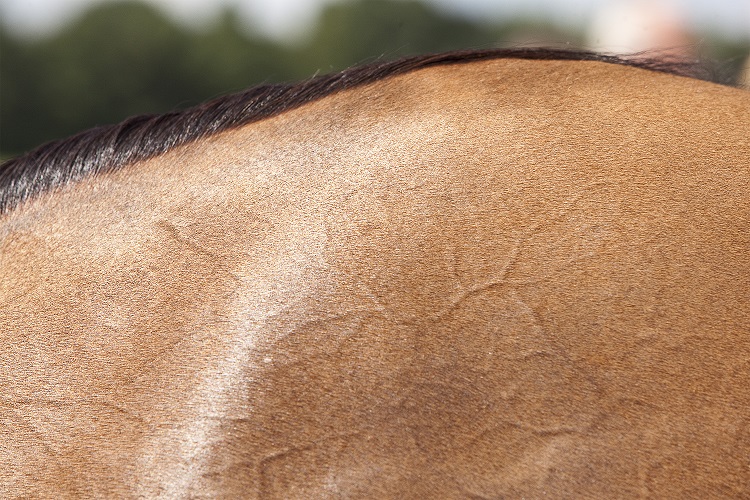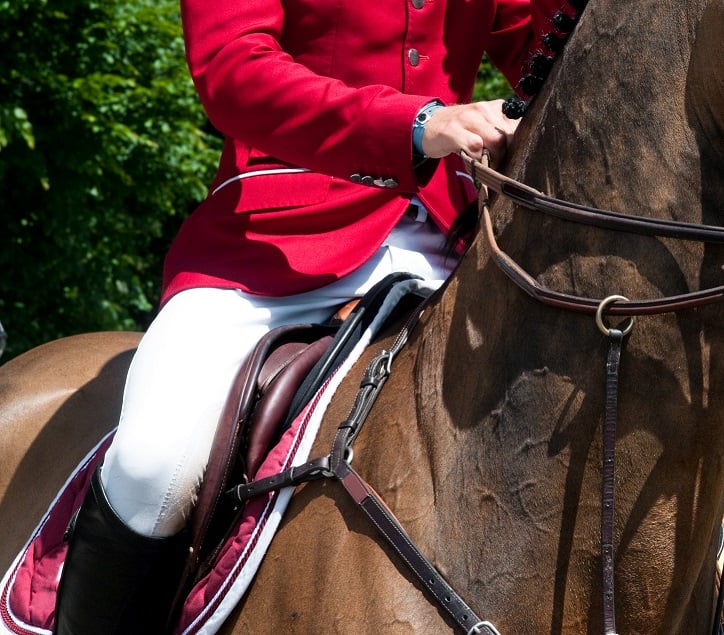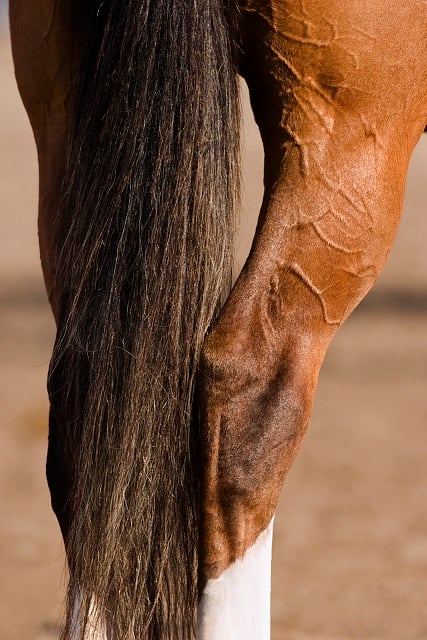The equine circulatory system is responsible for transporting blood, nutrients and hormones to the horse’s various organs. It is also involved in the removal of carbon dioxide from the lungs, the immune response and much, much more!
The circulatory system is extremely complex and works alongside most of the other systems in the horse’s body. We can break the circulatory system down into its main components…

The Heart
This is the organ we would most associate with the circulatory system. It is a huge muscle which is responsible for pumping blood around the body. The heart consists of four chambers and weighs roughly 4 kilograms. Oxygenated blood enters the heart into the first chamber, the Left Atrium. From here, it is pumped into the Left Ventricle, then out and onto the horse’s other organs. When the deoxygenated blood returns, it enters the heart via the Right Atrium and is then pumped into the Right Ventricle, after this, the blood returns to the lungs to be reoxygenated.
The Blood
Blood is made up of white and red blood cells and plasma. Red blood cells act as transporters to carry oxygen around the body and to remove carbon dioxide. White blood cells are part of the immune response, being contained within blood means that they have a fast and efficient transport system to investigate foreign bodies and potential infections. The blood is also responsible for transporting nutrients and hormones, and plays a role in cooling the horse down, which is why you see raised veins on racehorses and other thin skinned horses during hot weather or after they have been exercised.

Blood Vessels (Arteries, Veins and Capillaries)
Blood vessels are responsible for transporting the blood around the body to the different structures and tissues. Arteries transport blood away from the heart and veins bring the blood back. Capillaries connect arteries to the veins. Through the thin walls of these capillaries is where oxygen is removed from the blood and delivered to the various structures of the body, and carbon dioxide is added to the blood so that it can be removed.
Spleen
The spleen is responsible for removing damaged red blood cells. It also releases new red blood cells into the blood stream during exercise, which allows the horse to supply its body with more oxygen, more efficiently, this helps to improve the horse's speed and stamina.

The Frog
Interestingly, the frog can also be considered part of the circulatory system. Every time the horse takes a step and applies pressure to the frog, the blood in the limbs is pushed back up to the main trunk of the horse!

If you feel that your horse may benefit from some help with its circulation, herbs such as Nettle, Hawthorn and Turmeric are excellent at providing support, all of these can be found as individual supplements from our MeadowBlend range.
Alternatively, our supplement called ‘No Fill’ contains a great blend of herbs including Nettle, Hawthorn and Ginkgo for circulatory support, along with some other beneficial herbs to support the lymphatic system also.
For free advice and support call our Science and Nutrition Department on freephone 0800 585525, we are open every day. You can also talk directly to Dr Stephanie Wood (PhD Equine Nutrition) by emailing [email protected]

.png)